QUOTE(STREXNIN100 @ Jan 7 2020, 10:48 AM)
OK of course, i understand.QUOTE(STREXNIN100 @ Jan 7 2020, 10:48 AM)
On Q2 it is more interesting than on Q3 because in this case there will be no influence of the trigger circuit D6, D7 and C54 on the waveform.
OK understand.QUOTE(STREXNIN100 @ Jan 7 2020, 10:48 AM)
Understand how perfect the differential inputs (or external differential probes) of your oscilloscope are, you need to read the documentation for them. Now there is no need to measure waveforms at different points of the device at the same time - just use one channel!
Just in case for the future: please measure with a good tester the resistance between the terminals of your dif. probe. In all four possible options. If the tester shows a short circuit in at least one of the measurement options (or even a resistance of hundreds of kilo-ohms), then these dif. probe cannot simultaneously record oscillograms in different — not having a common point — device locations !! In addition, when measuring in devices with high voltages, you must make sure in the manual that your dif. probe withstand this voltage difference !!
My dif. probe has resistance about 10 MOhms between testing red and black plugs. 5 MOhms is the resistance between testing leads and of BNC for oscilloscope input. So it should be safe to measure couple hundreds of V.Just in case for the future: please measure with a good tester the resistance between the terminals of your dif. probe. In all four possible options. If the tester shows a short circuit in at least one of the measurement options (or even a resistance of hundreds of kilo-ohms), then these dif. probe cannot simultaneously record oscillograms in different — not having a common point — device locations !! In addition, when measuring in devices with high voltages, you must make sure in the manual that your dif. probe withstand this voltage difference !!
The standard passive probes delivered with the oscilloscope has about 9 MOhms on 10x setting. So no problem too.
QUOTE(STREXNIN100 @ Jan 7 2020, 10:48 AM)
The following oscillograms are much more interesting to me now:
1. Between the source (S) Q2 and the anode (G) Q2.
2. Between the source (S) Q2 and the gate (G) Q2.
Here are the oscilograms, i was strong enough to try both channels in one screen 1. Between the source (S) Q2 and the anode (G) Q2.
2. Between the source (S) Q2 and the gate (G) Q2.
Look here:
Q2S - AD22 measured with differential probe. 500mV/div, 5us, trigger at 930mV.
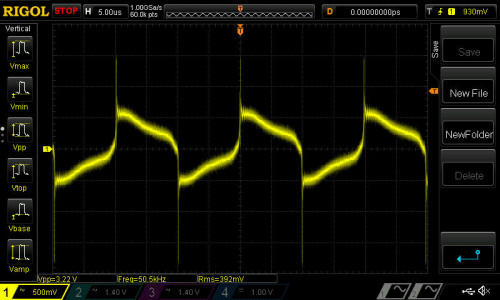
Q2S - AD22 measured with differential probe. 1,55V/div, 5us, trigger at 930mV.
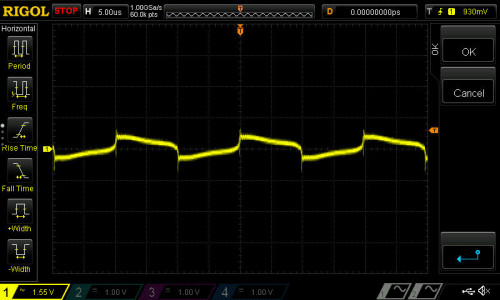
Q2S - AD22 measured with differential probe. 1,55V/div, 10us, trigger at 930mV.
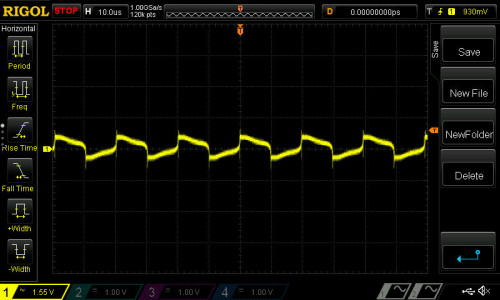
Q2S - AD22 measured with differential probe. 1,4V/div, 5us, trigger at 1.01V. Comparable oscilogram with lower one.
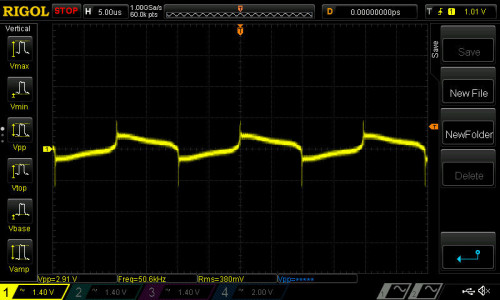
Q2S - Q2G measured with differential probe. 1,4V/div, 5us, trigger at 1.01V. Comparable oscilogram with upper one.
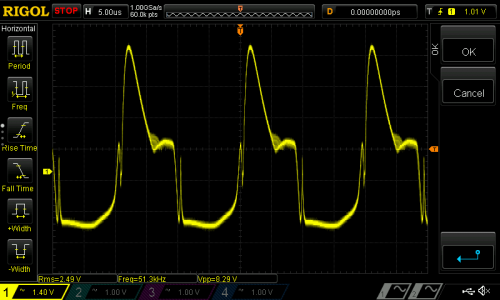
This will happend when measuring both signals (AD22 and Q2G) at once with common ground at Q2S, no matter what side is differential probe used, or diff. probe + passive probe or two passive probes.
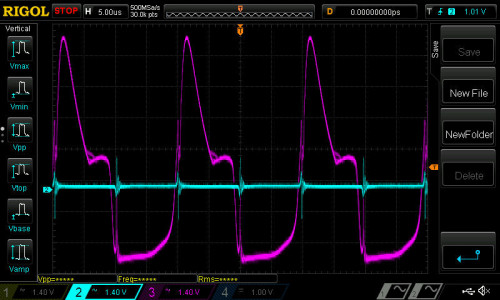
AD22 signal is ruined when try to measure it with passive probe.
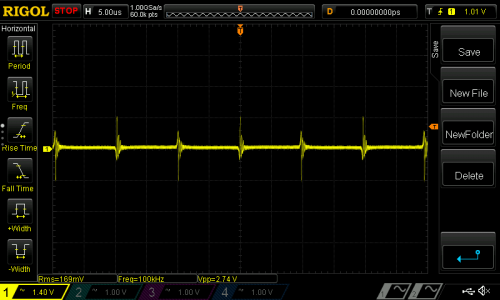
Hope this oscillograms will help you.


 Jan 8 2020, 01:08 AM
Jan 8 2020, 01:08 AM

 Quote
Quote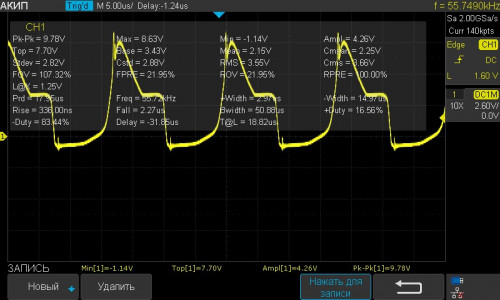
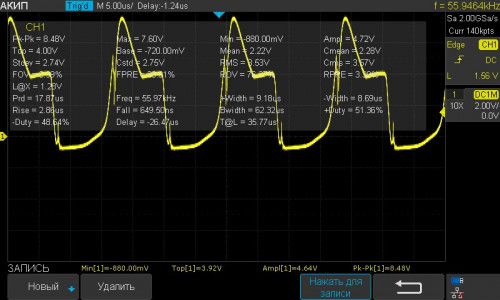
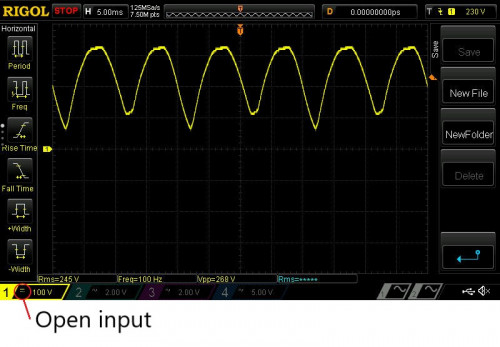
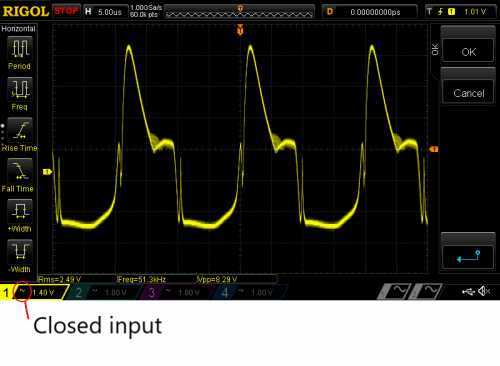
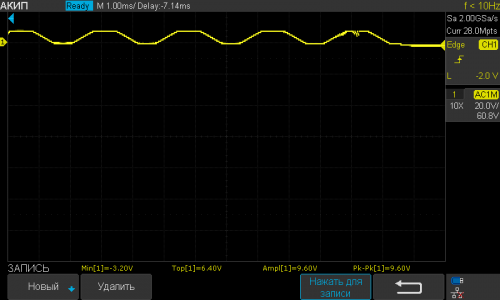
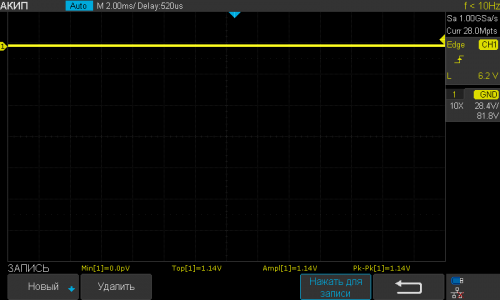
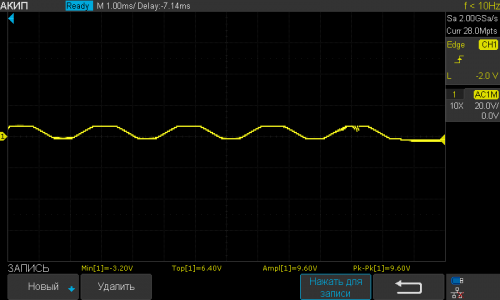
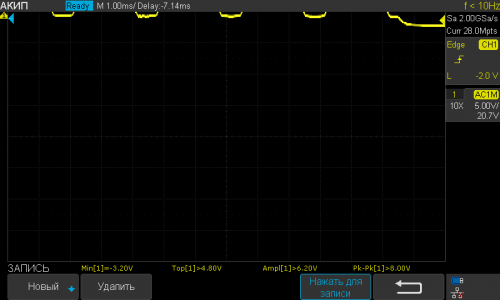
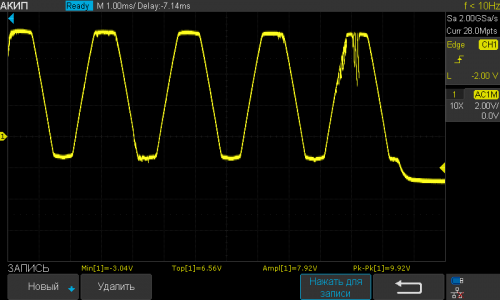


 0.0325sec
0.0325sec
 0.48
0.48
 6 queries
6 queries
 GZIP Disabled
GZIP Disabled